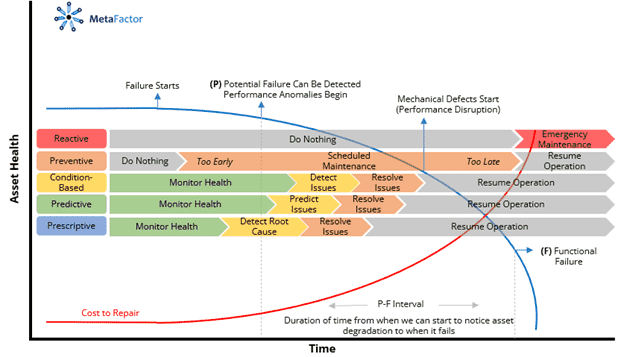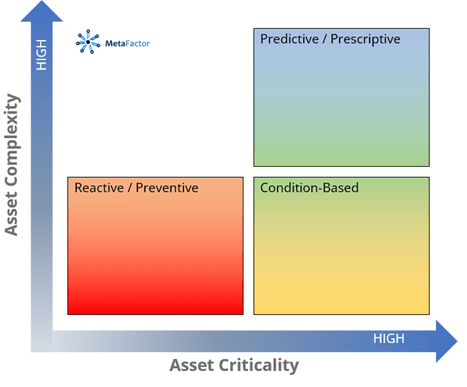Background
Companies within the oil and gas industry have used operational data historians since the 1980s. Many organizations have developed a rich and comprehensive dataset of operational data. The main function of the data has historically been to enable remote visibility and provide situational awareness.
As organizations become more digitally mature, they are starting to understand the immense value of the data that they possess. Companies are starting to use operational data beyond traditional use cases. The oil and gas industry typically lags other industries in terms of digital adoption. While some organizations are trying to leverage newer technological applications including artificial intelligence, a lot are just not there yet. Many have found significant value by simply new ways of utilizing the decades-old data that they already possess.
Organizations have saved millions of dollars and continue to do so on an annual basis as a result of implementing simplistic asset monitoring programs. Asset health monitoring is one of the key areas where companies are leveraging operational data to capture significant business value. This article explores this use case area in more detail.
Types of Maintenance
A P-F curve is a graph that shows the health of equipment over time to identify the interval between potential failure and functional failure. The eventual failure of any equipment is inevitable, due to natural wear and tear and continual usage. In most cases, there is a gradual degradation of asset performance before the end of equipment life (functional failure point). The P-F curve helps to characterize the behavior of equipment over time.
As organizations start to move from reactive towards prescriptive maintenance, they increasingly start to rely on data to inform their decisions. A combination of targeted statistical analysis along with engineering first-principles that has been seen to yield the most effective results. With the progression to using data-driven maintenance strategies, companies can detect or predict issues quicker, resolve them in a more cost-effective manner, and reduce unnecessary downtime or maintenance.

Reactive Maintenance
This is where system users wait for the system to experience a functional failure before maintenance occurs. Reactive maintenance results in high costs to repair and typically a longer duration of lost production since the equipment must be shut off to avoid catastrophic damage, until emergency repairs can be conducted.
Preventive Maintenance
Perform maintenance on a fixed schedule. Although more effective than a reactive strategy, this method may result in unnecessary trips and shutdowns to perform routine maintenance when no maintenance may be required. The scheduled maintenance may be too early or too late to catch issues. In comparison to data-driven maintenance methods like condition-based maintenance, the scheduled maintenance strategy is less efficient and cost-effective.
Condition-Based Maintenance
Data-centric approach that uses sensors and data to monitor for pre-set conditions or thresholds that, when met, will signal maintenance is needed. The conditions are often based on engineering principles, anomaly detection, or deviation against control limits. Using this method, companies can detect issues earlier than preventive maintenance. Condition-based maintenance increases efficiency by only initiating maintenance when required.
Predictive Maintenance
Builds on the data-driven approach used by condition-based maintenance. In this strategy, statistical data analysis techniques augment existing condition-based maintenance methods. With this strategy, organizations also use machine learning techniques to further enhance the detection capabilities, which allows them to predict issues before they happen, or at least, earlier than condition-based methods can detect them.
Prescriptive Maintenance
This strategy further builds upon the predictive maintenance strategy and goes one step further to help companies understand what the root cause behind predicted issues may be. Sophisticated models may be built using neural networks, fault trees, or other techniques to determine the likely route cause of a potential failure so specific corrective action can be prescribed. This helps identify the potential failure earlier and makes fixing the problem easier and less expensive.
Prioritization of Critical Assets
While the benefits of data-driven maintenance methods may be clear, there are costs associated with the evolution of their maintenance strategy, and the implementation of advanced data analysis. It does not make sense for organizations to implement sophisticated data-driven maintenance methods for every type of asset. Many companies perform a risk assessment to determine the most important assets in their operation and focus on these instead of focusing on everything (i.e., following the 80/20 rule). A matrix like the one below may be used to help group assets into different categories and assign the correct type of maintenance method to that category.

Typical Data-Driven Analysis Techniques
Anomaly Detection
Generally comparing process parameters against statistical averages or control limits, with respect to operating modes and conditions.
Vibration Monitoring
The process for measuring vibration levels and frequencies of machinery to analyze the health of machines and their components. Vibration analysis can detect problems like imbalance, bearing failure, mechanical quality issues, bent shafts and more.
Oil Analysis
An oil analysis program helps verify asset operation for lubricated assets by checking oil properties to determine if the correct levels of additives are present, and viscosity is optimal. Oil analysis also scans for destructive contaminants in the oil and analyzes the presence of particles produced from mechanical wear, corrosion, or other machine surface degradation.
Thermography
Used to detect temperature changes, which can indicate stress on parts and equipment. Infrared thermography. A thermal imager detects radiation coming from an object, converting it to temperature and displaying an image of the temperature distribution in real time. Often utilized with a baseline image for comparison, infrared thermographic images can show when an asset is becoming overheated.
Electrical Analysis
Electrical analysis is used to assess incoming power quality using motor current readings to detect when assets are receiving abnormal amounts of electricity.
Pressure Analysis
Maintaining the correct pressure is vital for equipment such as hydraulic hoses or pipelines to ensure fluids move efficiently through. Pressure analysis can continuously monitor pressure levels in real time and alert users if any variations or drops are detected.
Ultrasonic Analysis
Ultrasonic analysis uses sound to identify potentially failing assets by detecting high-frequency sounds and converting them into audio and digital data. Data collection can either be contact-based or non-contact. Mechanical issues like bearing faults, lubrication problems, gear damage and pump cavitation require contact-based methods. This is because such faults emit a high-frequency noise. Ultrasonic contact methods are also helpful for detecting electrical faults on motors, as loose or broken rotor bars can generate a high-frequency and rhythmic pattern. Lastly, steam traps that are failing may have steam constantly leaking past the internal seals, causing a rattle. Ultrasound analysis detects this event. Non-contact methods like air surveys use ultrasonics to detect leaks in compressed gas systems.
Commonly Monitored Asset Types
The following are a list of assets which companies in the oil and gas industry commonly monitor, due to their criticality:
Pumps and Compressors
Pumps and compressors are essential in oil and gas facilities for the transportation of fluids. Common types of pumps include centrifugal, reciprocating, diaphragm, and rotary pumps. Hydraulic problems with pumps may cause them to fail in delivering fluids or delivering an insufficient capacity, whereas mechanical issues can be characterized by excessive power consumption or the development of seal chambers, etc.
In the upstream world, specialized pumps called electrical submersible pumps (ESPs) and progressive cavity pumps (PCPs) often have a high cost of downtime and repairs and are targeted for asset maintenance programs. Compressors are key in many aspects of oil and gas operations, especially with midstream operations where their uptime is and healthy operation directly tied to the revenue an organization earns.
Pipelines
Pipelines transport oil, gas, steam, and other materials to processing plants and refineries. By measuring key parameters such as temperature, pressure, and flow rates across the pipeline, companies ensure reliable and healthy operations. The detection of corrosion or build-up of hydrates is essential for safety and efficiency. Studying ultrasonic or pressure data can be useful to detect leakages and maintain pipeline integrity.
Induction Motors and Gearboxes
Within an oil or gas refinery, induction motors supply rotational mechanical power to numerous systems. Companies have started monitoring performance by utilizing a technique called motor current signature analysis. Gearboxes provide the function of transferring power to lower rotational speeds, and defects with gears may lead to machine downtime.
Heat Exchangers
Heat exchangers be found in most major processes within oil and gas processing facilities, such as the distillation process and reactors. Heat exchangers fouling is an area of great concern, as this can impact the system by slowing heat transfer. Monitoring the inlet and outlet temperatures allows detecting issues early and helps minimize downtime and degradation.
Dehydrators
The gas dehydration process focuses on removal of water vapour from natural gas streams to meet sales specifications or for other process requirements. Water vapour increases natural gas corrosiveness, especially when sour gases are present, such as Hydrogen Sulphide (H2S) and Carbon Dioxide (CO2). High moisture levels in natural gas promote hydrate formations which contribute to additional equipment damage.
Key Benefits
In summary, the following are some of the major benefits companies are attempting to realize through the implementation of asset health monitoring initiatives:
Downtime Reduction
Companies are minimizing downtime within their operations by triggering maintenance when it is required. In comparison to reactive or preventive maintenance, data-driven strategies are more effective in reducing actual downtime. This is especially valuable for highly critical assets in an operation.
Efficient Equipment Maintenance
Reducing inefficient maintenance efforts by avoiding “too early” or “too late maintenance” helps improve efficiency by shaving off unnecessary efforts.
Maintain Asset Performance
By monitoring performance of assets over time and detecting issues as soon as performance starts to degrade, organizations can minimize the risk of quality-related concerns and maintain performance of their assets.
Cheaper Repairs
Companies are catching repairs earlier using the advanced maintenance strategies discussed in this article. This means that repairs are not as significant and generally require less downtime to complete. Ultimately, firms are saving money by avoiding downtime and catastrophic failures, and making operations more efficient.
Increased Safety
Timely maintenance improves employee and process safety and reduces risks to worker health. Assets with potential safety hazards can be operated in a controlled and monitored fashion to minimize such risks.
We Can Help
We are specialists in historian systems, analytical and cloud toolsets, and reporting and business intelligence tools that can help your organization achieve these benefits. We are Calgary OSIsoft PI Experts and Calgary OSIsoft AF Experts. Talk to us today to find out how we can help your company.